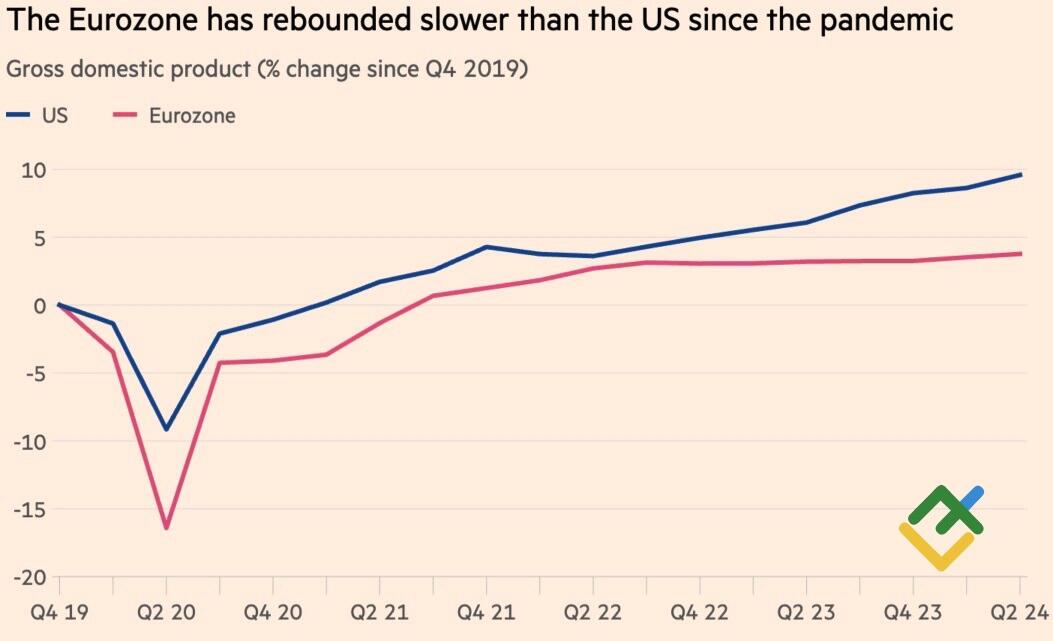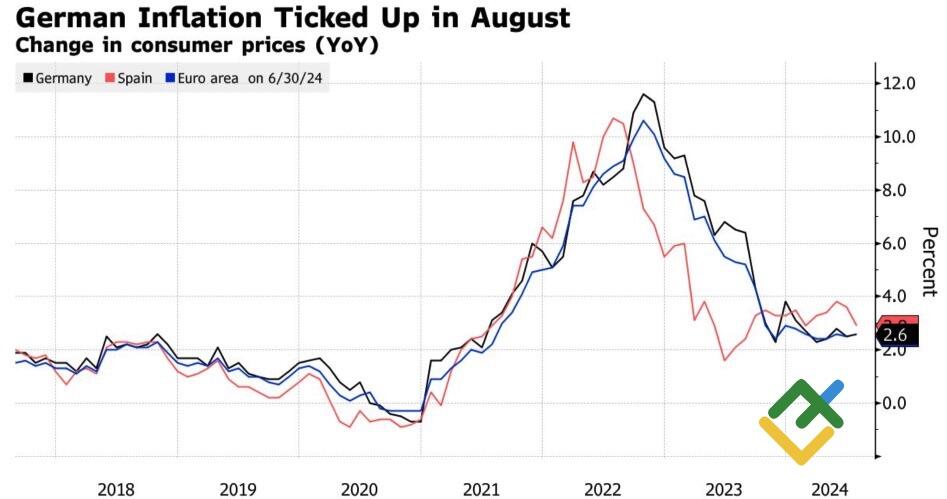
No matter how much pain the European economy is experiencing and how much global risk appetite is deteriorating, the approaching start of the Fed’s monetary expansion is limiting the EURUSD‘s decline. Let’s discuss this topic and make a trading plan.
The article covers the following subjects:
Highlights and key points
- The Bank of Japan’s decision did not dampen global risk appetite.
- The 0.3% GDP growth in the eurozone is not cause for celebration.
- The fall in the EURUSD pair is slowed down by the Fed’s plans to cut rates.
- The euro risks returning to the range of 1.083-1.09.
Weekly US dollar fundamental forecast
The overnight rate hike to 0.25%, the gradual reduction of the Bank of Japan’s quantitative easing program over the next two years, and the central bank’s indication of potential further normalization of monetary policy were all anticipated by financial markets. The EURUSD pair has demonstrated resilience in the face of recent market challenges and is poised to receive positive news from the Federal Reserve. Inflation in the US is decelerating while the unemployment rate is increasing. Most likely, it is now appropriate to reduce the federal funds rate.
The 0.3% expansion of European GDP in the second quarter was not a positive development for the EURUSD pair. The actual figure was better than the consensus estimate of Bloomberg experts but fell short of the ECB’s forecast of 0.4%. Without the 1.2% increase in Irish GDP, which is highly volatile, the European economy would have grown by 0.2%. The balance of risks with inflation allows Pantheon Macroeconomics to predict that the European Central Bank will cut the deposit rate in September.
US and EU’s economic performance
Source: Financial Times.
As anticipated, following a brief increase, EURUSD quotes declined below 1.08. In light of the encouraging data on US job openings and consumer confidence, there is a growing perception that the US economy may not be as weak as previously thought and that the federal funds rate may not be reduced as aggressively as anticipated in 2024. These factors, along with investor concerns over disappointing corporate reporting from G7 companies, have provided support for the US dollar.
In the US equity market, a shift from greed to fear has led to an active rotation process between overvalued securities of technology companies and shares of small-cap issuers. The process was closely tied to the Trump factor, but once the updated ratings came out, the S&P 500 found a bottom and helped the EURUSD recover. According to the latest polls, Kamala Harris is ahead of the Republican candidate by 1 pp in key swing states. Compared to Joe Biden’s 2 pp gap, this looks like a success for the Democratic party, which has managed to calm the markets.
The major currency pair is now awaiting further guidance from the Federal Reserve, but the release of European inflation data for July will be a key indicator. The Spanish and German CPI figures have caused considerable confusion among investors.
Euro area inflation rate
Source: Bloomberg.
The euro has lost some of its advantages, including the acceleration of the European economy and investors’ optimism that the worst in France has been avoided. This has prompted the ECB to cut rates, which has limited the potential for a EURUSD rally. Even if the Fed hints at monetary policy easing in September, the pair is likely to start a consolidation phase.
Weekly EURUSD trading plan
The Fed’s dovish rhetoric will allow traders to open more long trades on the EURUSD pair, adding them to the ones initiated in the 1.079-1.08 area upon the pair’s return to the range of 1.083-1.09.
Price chart of EURUSD in real time mode
The content of this article reflects the author’s opinion and does not necessarily reflect the official position of LiteFinance. The material published on this page is provided for informational purposes only and should not be considered as the provision of investment advice for the purposes of Directive 2004/39/EC.
{{value}} ( {{count}} {{title}} )
This post is originally published on LITEFINANCE.





